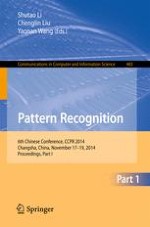The two-volume set CCIS 483 and CCIS 484 constitutes the refereed proceedings of the 6th Chinese Conference on Pattern Recognition, CCPR 2014, held in Changsha, China, in November 2014. The 112 revised full papers presented in two volumes were carefully reviewed and selected from 225 submissions. The papers are organized in topical sections on fundamentals of pattern recognition; feature extraction and classification; computer vision; image processing and analysis; video processing and analysis; biometric and action recognition; biomedical image analysis; document and speech analysis; pattern recognition applications.
